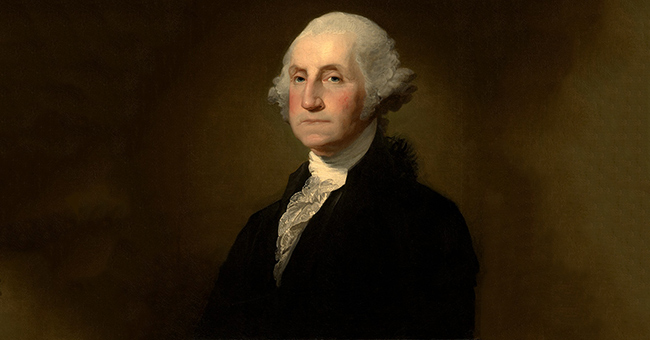Biography of George Washington
George Washington was the first President of the United States, the chief commander of the American Revolutionary War, and one of the founding fathers of modern America. His leadership, courage, and foresight in governance earned him the title “Father of the Nation.” He was born on February 22, 1732, in Westmoreland County, Virginia.
Childhood and Early Life
George Washington’s father, Augustine Washington, was a landowner and farmer. His mother, Mary Ball Washington, was a devout and strict woman. Washington’s childhood was spent in rural Virginia. He never attended college but became skilled in arithmetic, geometry, geography, and surveying. As a teenager, he began working as a professional surveyor.
Washington was of English gentry descent. His ancestors came to America from Sulgrave, England. His great-grandfather, John Washington, arrived in Virginia in 1656, acquiring land and enslaved laborers. His son Lawrence Washington, and later Augustine Washington, George’s father, continued this legacy. Augustine was a tobacco planter and invested in iron production. During George’s youth, Augustine was a middle-class member of Virginia’s gentry.
George had six siblings who reached adulthood. Two—Lawrence and Augustine Jr.—were from his father’s first marriage to Jane Butler Washington. His other four siblings were Samuel, Betty Elizabeth, John Augustine, and Charles. Three siblings died before reaching adulthood: his sister Mildred died at age one, his half-brother Butler died in infancy, and his half-sister Jane died at age twelve, when George was just two. His father died suddenly in 1743, when George was eleven.
Military Career – The French and Indian War
Washington began his military career as a major in the Virginia militia during the French and Indian War. In 1753, he was sent as an envoy of the British Crown to present-day Erie, Pennsylvania, to meet French and Native American officials. His first major expedition was to the Ohio Valley.
The Ohio Company, backed by British investors, sought to expand trade in the Ohio Valley, opening new opportunities in Native American commerce. In 1753, the French deployed troops to secure the area. Virginia and Pennsylvania’s British colonies both claimed Ohio as their own. This led to conflict between the regions, sparking the French and Indian War (1754–1762), which became part of the wider Seven Years’ War (1756–1763). Washington was involved from the very start. Although he faced several early defeats due to lack of experience, his bravery and leadership were praised.
Marriage and Personal Life
In 1759, Washington married wealthy widow Martha Custis. They had no children together, but Washington adopted and raised her two children from her previous marriage. After their marriage, they settled at Mount Vernon, his plantation home, where he focused on farming and social activities.
The American Revolution and Leadership
In 1775, the thirteen American colonies rebelled against British rule. The Continental Congress appointed Washington as commander-in-chief. He was disciplined, dutiful, and strategic. For eight long years, he led the Continental Army against British forces, ultimately securing American independence.
The most decisive victory came in 1781 at Yorktown, where British General Cornwallis surrendered. Following the war, the 1783 Treaty of Paris officially recognized U.S. independence.
Role in Building the Nation
After the war, Washington resigned his commission and returned to Mount Vernon—a rare act in history, as victorious generals often clung to power. In 1787, he presided over the Constitutional Convention that drafted the U.S. Constitution.
In 1789, he was unanimously elected the first President of the United States. Serving two terms (1789–1797), he established the foundation of the new nation’s government, developed the economy and judiciary, and pursued a foreign policy of neutrality.
Presidency and Policies
As President, Washington was pragmatic and moderate. He strengthened federal authority and prioritized constitutional governance. His Cabinet included Alexander Hamilton (Treasury Secretary) and Thomas Jefferson (Secretary of State), whose opposing views he carefully balanced.
Washington opposed political factionalism, warning that parties would cause division. He also urged the United States to avoid entangling itself in European diplomatic conflicts.
Retirement and Legacy
After two terms, Washington voluntarily stepped down in 1797—setting a precedent for democratic leadership. His “Farewell Address” became a guiding statement for American politics.
On December 14, 1799, Washington died at Mount Vernon. The nation mourned deeply. Congress later honored him as the “First in war, first in peace, and first in the hearts of his countrymen.”
Historical Impact and Memory
Washington was more than a general or president—he embodied moral integrity and ideal leadership. The U.S. capital, Washington, D.C., numerous universities, states, and cities are named after him. His face appears on the one-dollar bill and the quarter coin.
His patriotism, duty, and moral character continue to inspire leaders and citizens worldwide. Washington’s life is not just a chapter in history—it is a living example of principled leadership. Rising to the highest levels of political and military power yet exercising restraint to protect democratic ideals remains one of his greatest lessons to future generations. Without his contribution, the birth of modern America would be unimaginable.
Sources:
National Archives (USA)
Mount Vernon Official Site
Library of Congress
Biography.com

